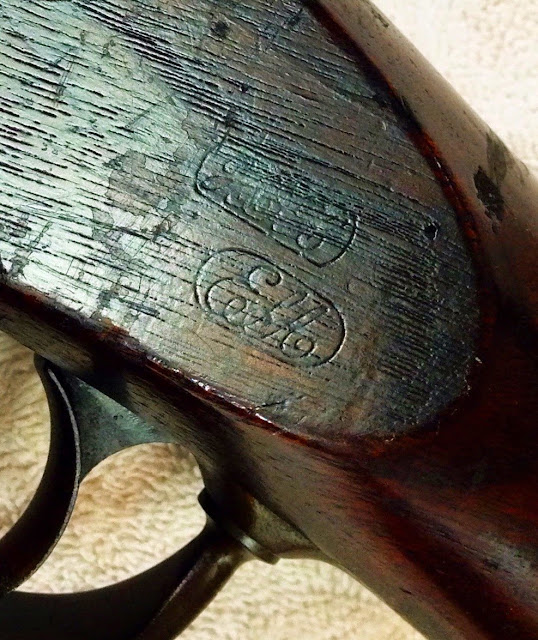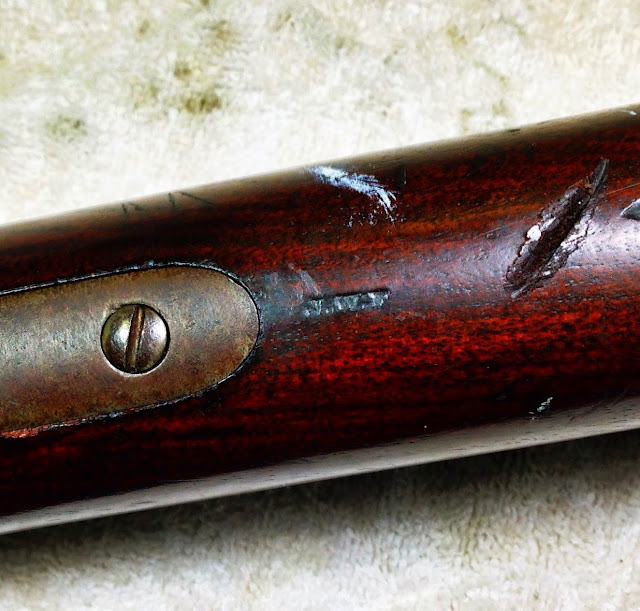jdculpgmail.com
32 Cal.
- Joined
- Nov 2, 2014
- Messages
- 9
- Reaction score
- 0
Hello,
I have inherited my grandfather's 1863 Springfield and I have a slew of questions. My mom remembers him shooting it when she was a little girl. It has been converted to a shotgun by Bannerman or similar. It has been bored out to a smoothmore, the stock has been shortened, original sights removed and replaced with a single bead, thimble added and it appears to be a replacement ramrod, but I don't know enough about what the original 1863 ramrod should look like to know for sure.
It was missing one sidelock screw which I replaced with a reproduction from Dixie Gunworks. It is a tad bit long, as you can probably see in the pictures, so I will have to shorten it.
The bore diameter is 0.642" at the muzzle and is round. The barrel is 33.5" long. It is clean and serviceable inside. No pitting.
The nipple is sized for a musket cap (they are on order). It removes easily and is pretty clean inside. The hole and passageway are clear.
How much bigger than the bore diameter should the cards/wads be? From what I have read here I'm guessing the ballpark should be 0.005" over. I know this is a non-standard bore size and I may have to make my own, but if you know a place that sells the right size, please let me know.
I have read that I should remove and inspect the breech plug. I have also read that they can be quite tight. The grip surface on the breech plug is tapered. How should I grip it to turn it? Do I need to make/buy a wrench to fit, or is there another commonly used method? Should I use a hardwood ramp and grip the breech plug in the vice then turn the barrel? Is it okay to apply a little heat? Was there any heat treatment done on the barrels and plugs when they were manufactured that I need to be aware of so I don't alter it?
Can anyone recommend a shot load for this non-standard size barrel? A chart I found online says this bore size is between 17 and 18 gauge.
Can anyone recommend a ball size? I'm guessing it should be 0.627" and a 0.015" thick patch. Does anyone know where I can buy such a size ball or minie? Or a mold that size?
Can anyone give me information on the stock cartouches? Do they point towards a certain company such as Bannerman who did the smoothbore conversion, or are they original marks for the stock, or an aftermarket replacement?
Do the markings on the breech give any information?
Can I use modern black powder substitutes? I want to use black powder, but need to shop around and see what is in stock locally without paying hazmat shipping fees.
I know I have a ton of questions, thanks for being patient as I learn.
Semper Fidelis,
Groundhog76

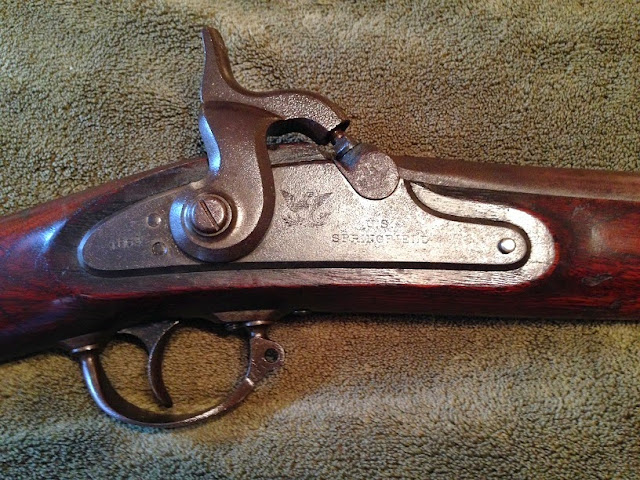
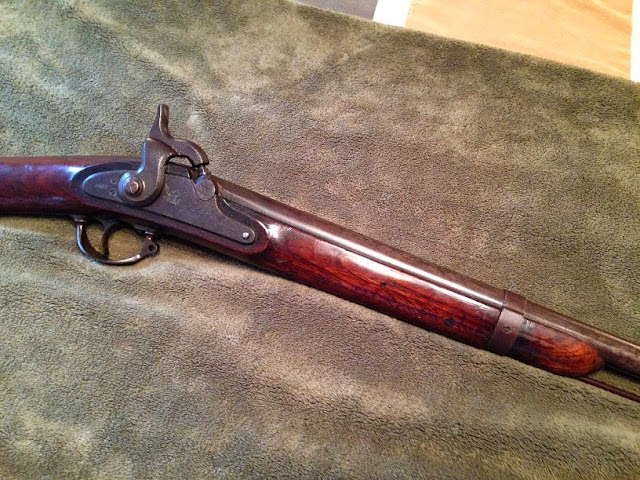
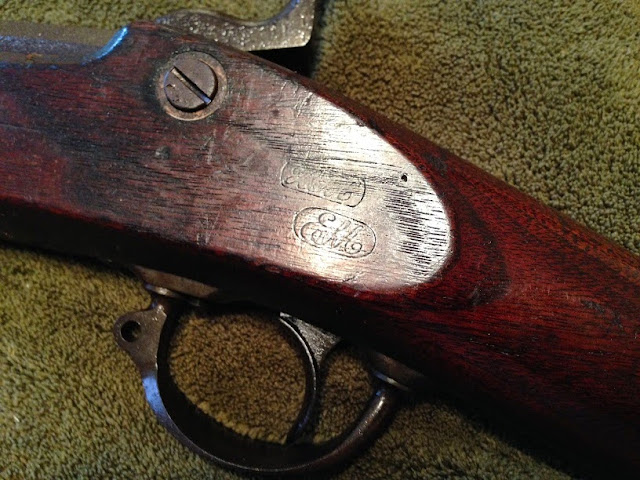
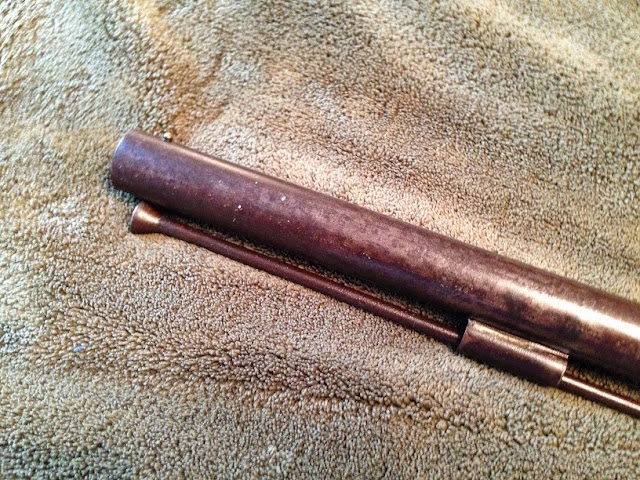
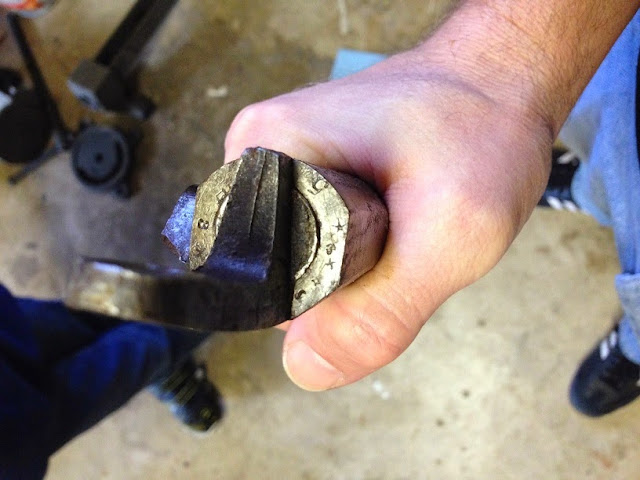
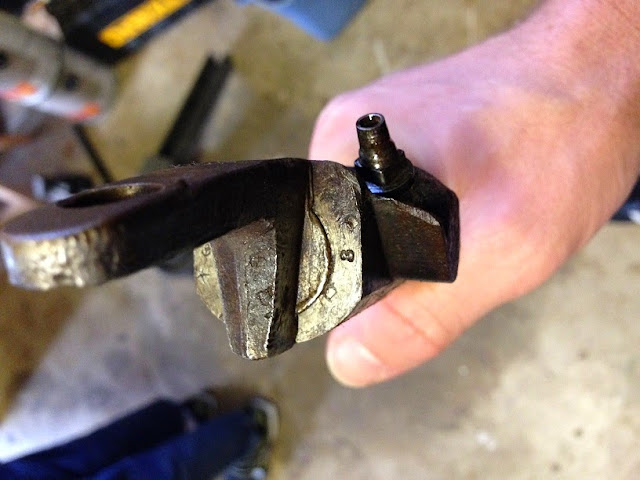
I have inherited my grandfather's 1863 Springfield and I have a slew of questions. My mom remembers him shooting it when she was a little girl. It has been converted to a shotgun by Bannerman or similar. It has been bored out to a smoothmore, the stock has been shortened, original sights removed and replaced with a single bead, thimble added and it appears to be a replacement ramrod, but I don't know enough about what the original 1863 ramrod should look like to know for sure.
It was missing one sidelock screw which I replaced with a reproduction from Dixie Gunworks. It is a tad bit long, as you can probably see in the pictures, so I will have to shorten it.
The bore diameter is 0.642" at the muzzle and is round. The barrel is 33.5" long. It is clean and serviceable inside. No pitting.
The nipple is sized for a musket cap (they are on order). It removes easily and is pretty clean inside. The hole and passageway are clear.
How much bigger than the bore diameter should the cards/wads be? From what I have read here I'm guessing the ballpark should be 0.005" over. I know this is a non-standard bore size and I may have to make my own, but if you know a place that sells the right size, please let me know.
I have read that I should remove and inspect the breech plug. I have also read that they can be quite tight. The grip surface on the breech plug is tapered. How should I grip it to turn it? Do I need to make/buy a wrench to fit, or is there another commonly used method? Should I use a hardwood ramp and grip the breech plug in the vice then turn the barrel? Is it okay to apply a little heat? Was there any heat treatment done on the barrels and plugs when they were manufactured that I need to be aware of so I don't alter it?
Can anyone recommend a shot load for this non-standard size barrel? A chart I found online says this bore size is between 17 and 18 gauge.
Can anyone recommend a ball size? I'm guessing it should be 0.627" and a 0.015" thick patch. Does anyone know where I can buy such a size ball or minie? Or a mold that size?
Can anyone give me information on the stock cartouches? Do they point towards a certain company such as Bannerman who did the smoothbore conversion, or are they original marks for the stock, or an aftermarket replacement?
Do the markings on the breech give any information?
Can I use modern black powder substitutes? I want to use black powder, but need to shop around and see what is in stock locally without paying hazmat shipping fees.
I know I have a ton of questions, thanks for being patient as I learn.
Semper Fidelis,
Groundhog76












